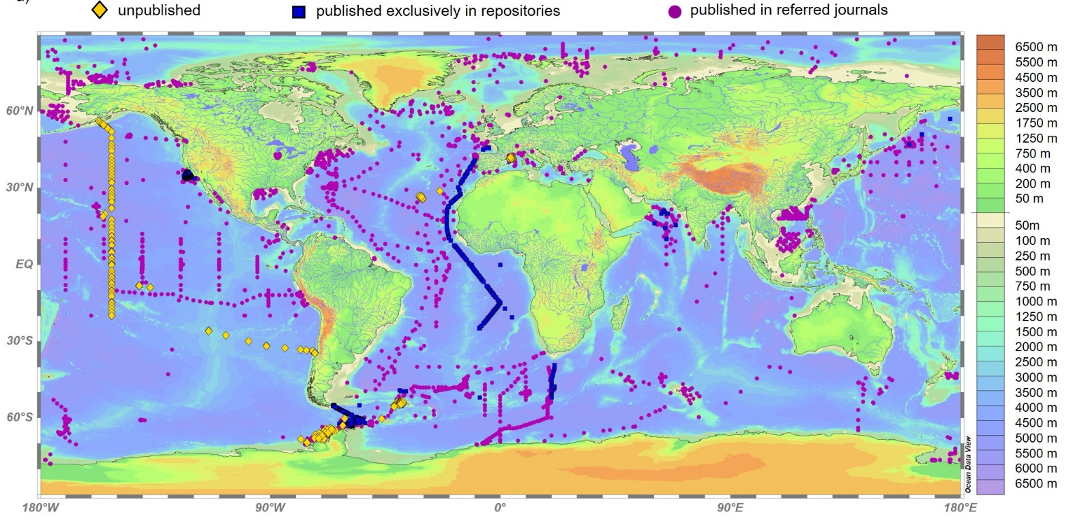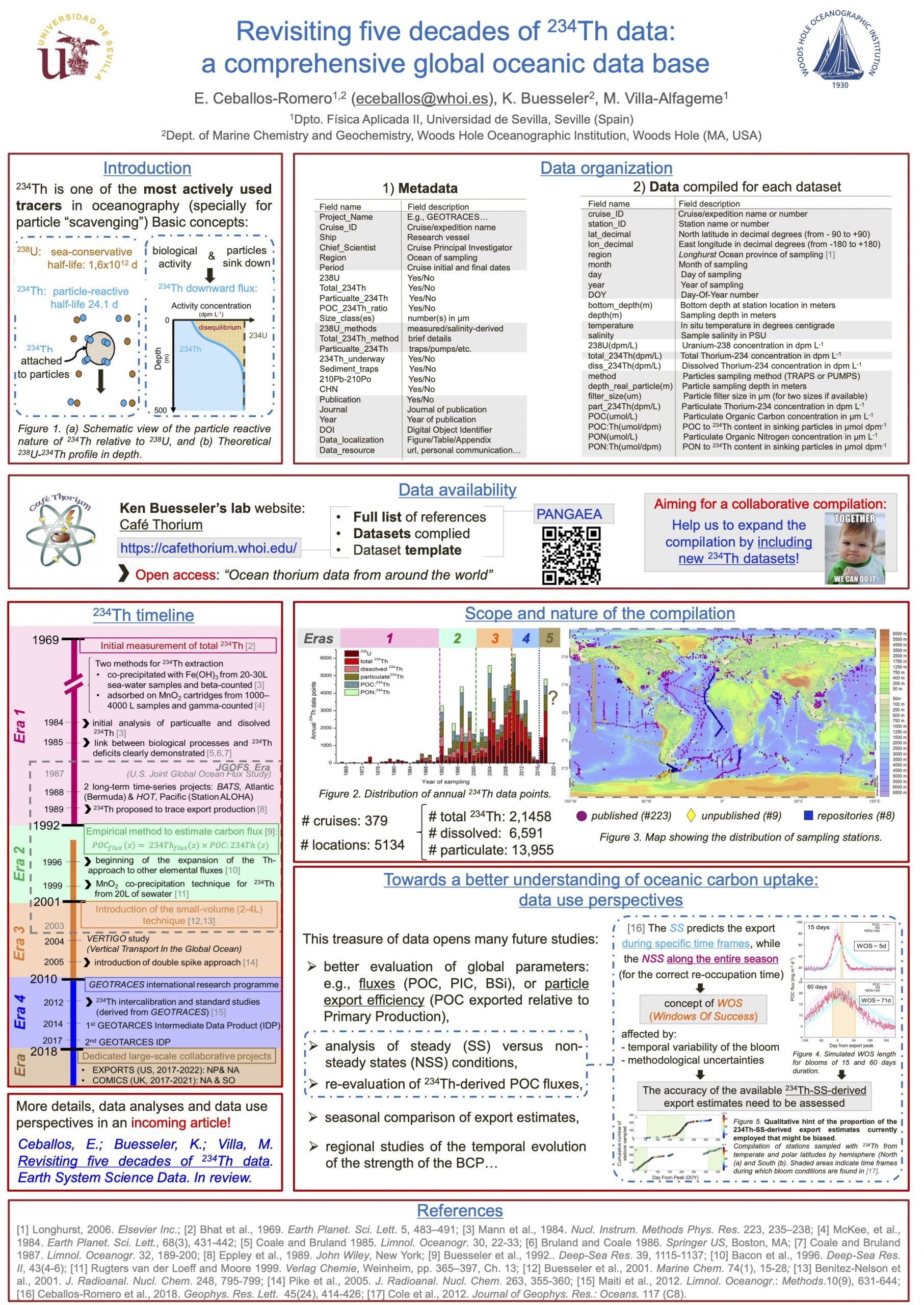Comprehensive Global Oceanic Database of 234Th Data

Motivation
234Th is one of the most actively used tracers in oceanography, specifically for particle “scavenging.” After 5 decades of extensive use of 234Th to understand natural aquatic processes, a unique repository of 234Th measurements has never been compiled and 234Th data remain scattered. Many 234Th depth profiles have been collected using a variety of sampling instruments using sampling and analytical strategies that have been progressing since its first sampling in 1967. We present here a global oceanic compilation of 234Th measurements that collects results since the first reported measurement of this tracer in the ocean 1969 gathered in a single open-access, long-term repository that can be updated.
Compilation description
The compilation is made of a total 223 datasets. It includes data compiled from over 5000 locations spanning all the oceans for total, dissolved and particulate 234Th concentrations, and POC:234Th ratios. 379 oceanographic expeditions and more than 56000 234Th and 18000 238U data points have been compiled. Appropriate metadata have also been included along with other relevant parameters such as temperature and salinity when available. Data sources and methods information are also detailed along with valuable information for future analysis.
Data availability
The compilation has been an ongoing effort since 2018 and is now archived in the data repository PANGAEA® (http://www.pangaea.de), under the following DOI: https://doi.pangaea.de/10.1594/PANGAEA.918125.
Moreover, a manuscript that introduces the dataset along with informative and descriptive graphics is under review in Earth Systems Science Data and accessible at: https://essd.copernicus.org/preprints/essd-2021-259/#discussion.
Last, a dedicated web page - Sea of Thorium - is under development to i) grant free access to the compilation, allowing the researchers to search, filter, visualize and freely use existing 234Th data, and ii) encourage researchers to share their 234Th measurements and contribute to the compilation.
Contribute data!
This effort provides a valuable resource to better understand and quantify how the contemporary oceanic carbon uptake functions and how it will change in future that seeks to act as a coordinating umbrella to serve as a focal point for the 234Th community under the principles of openness and reproducibility.
We encourage authors to review or complement a dataset included in this compilation and contribute to its extension with new data. A template will eventually be available on the PANGAEA page but currently it can be downloaded HERE. Contact Elena Caballos Romero at eceballos@whoi.edu with any questions. Instructions to fill in this template are included in the template itself.
Funding
This work was partially funded by V Research Programme from Universidad de Sevilla (E.C.R.) and EU FEDER-Junta de Andalucía funded project US-1263369 (M.V.A.). K.O.B. was supported in part by NSF under GEOTRACES, NASA as part of the EXPORTS program and WHOI as part of the Ocean Twilight Zone project. M. Villa-Alfageme and K. Buesseler are also part of an IAEA Coordinated Research Project “Behaviour and effects of natural and anthropogenic radionuclides in the marine environment and their use as tracers for oceanographic studies”
Special Thanks!
We thank all those that have shared their data with us! Particularly Dr. F. Le Moigne, Dr. J. Dunne, Dr. M. Stukel, Dr. P. Martin and Dr. Peter Santschi. Special recognition to Dr. M. Rugters van der Loeff for so much data from so many years ago and detailed metadata to accompany it!
Thanks to Dr. K. Bruland and Dr. K. Coale for, in addition to data, sharing beautiful memories of the 234Th world.
Recognition also goes to Perrin Davison, Jennifer Kenyon, Cristina García Prieto and Carlos Núñez-Nevado for their valuable help with the quality control and review.
DATA!
- PANGAEA Database
https://doi.pangaea.de/10.1594/PANGAEA.918125
Research Paper
Ceballos-Romero, E., Buesseler, K.O., Villa-Alfageme, M., (2022) Revisiting five decades of 234Th data: a comprehensive global oceanic compilation, Earth System Science Data Discussions, 1-64. DOI: 10.5194/essd-2021-259.
Poster explanation of this project below!
